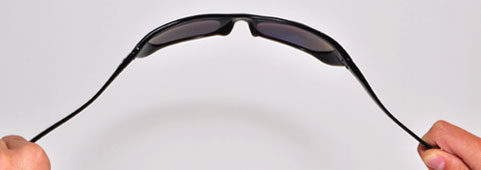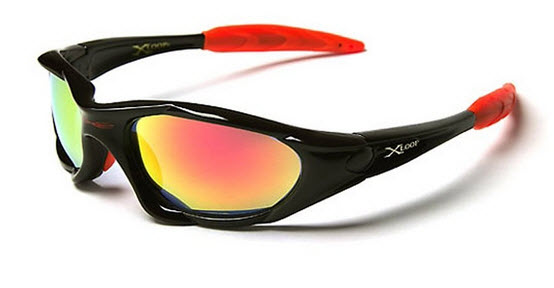Sports push your body to the limit, and without the proper equipment, not only is your performance affected, but you could seriously injure yourself. Before taking up a sport, we often think twice about the sort of equipment and clothing we need to get, but it’s not often that we think of eyewear. Yep, sports requires proper eyewear too! In situations where you might be at risk of seriously injuring yourself, you don’t want to compromise on the one thing that’s keeping you alert, your vision, do you? We tell you all you need to know about sports sunglasses, why they’re different, and what ones you should get!

Why you need Sports sunglasses
To begin with, you need to understand why you need sports sunglasses in the first place. If you’re one of those people who think that regular sunglasses would do just fine, you couldn’t be more wrong. Regular sunglasses are supposed to be used only for your day to day protection, and cannot withstand drops, pressure or constant movement. Their hinges and materials simply aren’t meant for it.
Sports sunglasses, on the other hand, can take quite a beating and still keep going. They’re made from far more durable materials, by which we mean both the frames and lenses, plus are specifically designed for added protection. You won’t find any cheap or easily breakable materials on any decent pair of sports sunglasses from a reputed manufacturer.

So what’s different about them you ask? Well for one, they’re incredibly lightweight. While playing sports, you don’t really want something that seems like a burden on your nose, so sports sunglasses are engineering specifically to leave the smallest footprint. Secondly, sports sunglasses are much snugger fitting than regular sunglasses so that they don’t fall off when you run, jump, or do whatever it is during the activity. Another very important and cool feature is the grippy material used on both the temples and nose bridge. This rubbery material keeps the glasses from sliding off your face, even if you’re sweating.
Benefits of Sports sunglasses
Now, it wouldn’t make much sense if the sports sunglasses you’re wearing don’t offer protection from UV rays, does it? Sports sunglasses always offer 100% protection from harmful UV rays, and come in different tinted colors depending on the sport or activity. A couple of high end sports sunglasses even come with interchangeable lenses for different light conditions. It’s very important to choose the correct tint for the sport, because it can seriously affect your performance. In some cases, it can also be dangerous to use the wrong tint color.

If you’re looking for 100% natural color reproduction, then a simple gray color tint will do just fine. In fact, slightly darker colors like brown and green, grey included, are ideal for most outdoor activities and lighting conditions. Although brown might slightly distort colors, it’s also a decent choice. All these 3 lens tint colors reduce glare pretty effectively.
However, if you’re involved in sports or activities that require enhanced contrasts and proper depth perceptions, you should probably go for lighter color tints. For ball based sports like tennis, baseball, cricket and football, yellow and orange tints would do great. Copper and amber are good choices too, but tend to distort color. They’re also good in situations where the blue sky, green grass, and you trying to keep track of something small, like a golf ball.

Then, we have something called a VLT, or Visible Light Transmission index. It basically tells you how much percentage of light reaches your eyes. As you can imagine, a higher percentage is associated with lighter lenses, and a lower percentage is associated with darker lenses. Here’s the scale:
- 0-19% VLT: Darkest, best for the brightest, sunniest conditions.
- 20-40% VLT: Dark yet balanced, best for all purpose use.
- 40+% VLT: Light, best for overcast, cloudy conditions.
- 80-90%+ VLT: Lightest, almost clear lenses.
Finally, we have lens materials. You probably won’t find sports sunglasses with glass lenses because of how fragile they are, but what you will see a lot is polycarbonate. Light and durable, this material is also shatter-resistant, which is something you definitely want. Polyurethane is also another option, is much more durable and flexible as well, but is also expensive. Last comes nylon, an inexpensive material found on casual sports sunglasses. It’s not as durable or clear as the other two materials we mentioned, so unless you really have no other option, we wouldn’t recommend going for it.
So that wraps up our guide on how to choose the best sports sunglasses! Let us know what you thought, and feel free to ask any questions if something isn’t clear!
